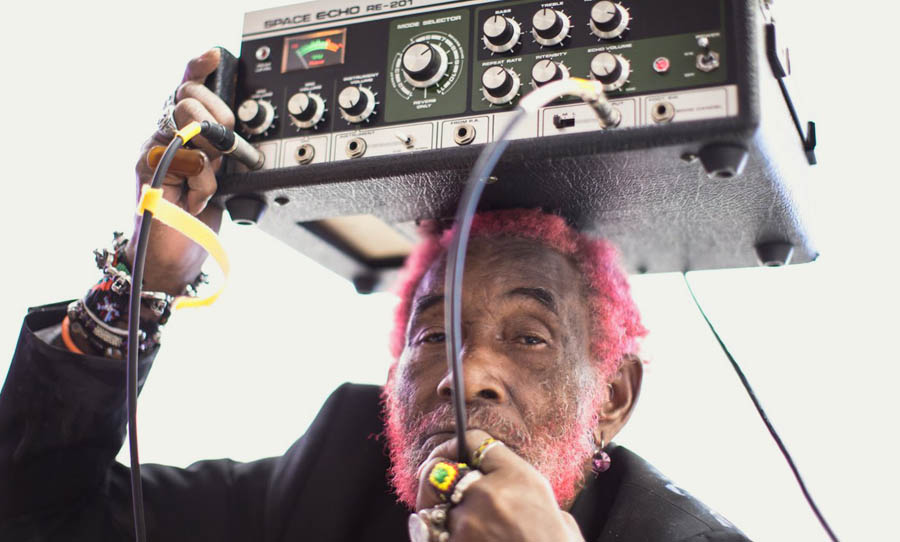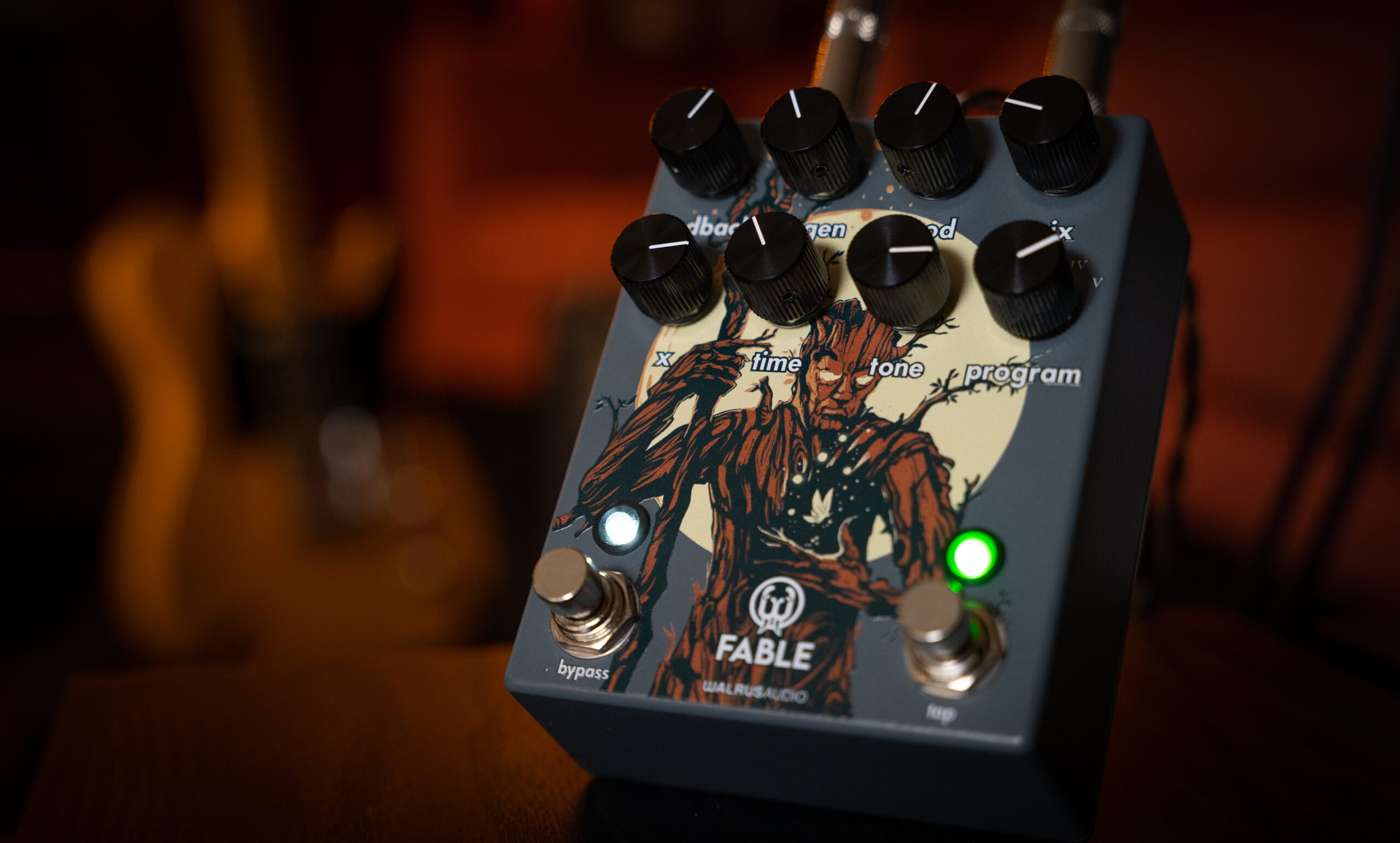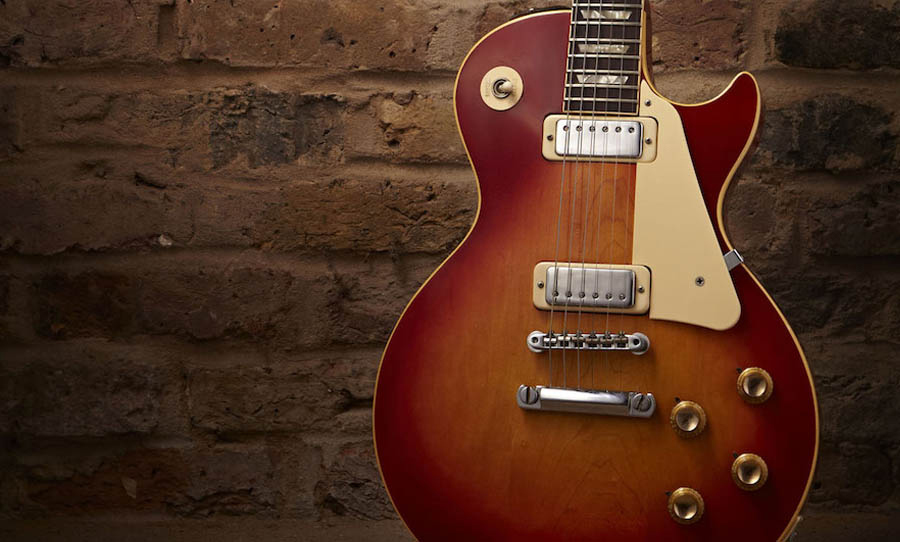Delay is a beguiling sonic tool for creating the illusion of an expansive sound. The sound bouncing off an imaginary distant cliff face brings an expansive world to mind.
Nowadays, it’s easy to attain a plethora of delay flavours. But when you stomp on a deceptively simple stompbox, you’re tapping into a history of experimentation that stretches back far into the previous century.
Some sonic adventurers have embraced the effect as a way to create ambience, extra rhythmic information and manipulate the listener’s perception of space and time. Let’s take a look at the artists who have traversed the dimensions with the help of delay.

Delay is the ultimate go-to effect for creating a sense of space. Check out 9 artists who have used the effect to make a signature tone of their own.
Les Paul
Aside from the multitude of audio innovations that emerged from the mind of Les Paul, he was also a pioneer of delay. In 1948, he was given a reel-to-reel tape machine by Bing Crosby – a serendipitous gift for someone who was looking to emulate the sound of a shout bouncing off a cliff face.
He and a friend installed second phonograph pickup behind the playback head on the tape machine, resulting in a repeat of the original sound. Check out the quintessential slapback tone that Les Paul and Mary Ford are able to produce on Whispering.
David Gilmour
After the days of rockabilly, where the delay found heroes like Chet Atkins to fly the flag, the sound of rock evolved to fill stadiums. Pink Floyd first came to prominence in the late ’60s and went stratospheric in the ’70s on the back of space-age tones. At the heart of it was David Gilmour and his trusty Binson Echorec.
The effect itself was unusual in that it used a multi-head magnetic disc to create its trademark echoes. The complex ambience on offer became a signature tone for Gilmour, with a prime example being Run Like Hell from the album The Wall.
Robert Fripp and Brian Eno
In 1972, a fateful meeting occurred between Robert Fripp and Brian Eno, who were both branching out from their respective high profile band projects, King Crimson and Roxy Music. In Eno’s London home, they experimented with a tape delay technique involving two reel-to-reel machines.
While this isn’t the characteristic echoes that we associate with delay stompboxes, it brought the concept of looping to a wider audience. This technique, nicknamed ‘Frippertronics’, was one of the first to unlock the power of delay as a source for creating ambient soundscapes with one instrument.
King Tubby and Lee “Scratch” Perry
In Jamaica, delay took on a different context. Reggae was a global phenomenon, spearheaded by Bob Marley, but on a local level, the sounds of dub were pouring out of the ubiquitous ‘soundsystems’. Two pioneers of this unmistakably Jamaican sound were King Tubby and Lee “Scratch” Perry.
One of the key elements in creating this unique sound was the Roland Space Echo. It’s a tape-based delay that has controls that beg to be tweaked in real-time. From the diffuse close reflections of rimshots, to the long rhythmic echoes from the horn section, King Tubby and Lee “Scratch” Perry created a whole new language for this effect.
Martin Hannett
The delay also took root in the gloomy climate of Manchester. As opposed to the mind-warping echoes that were ringing out of Jamaica, producer Martin Hannett was attempting to create an icy atmosphere of claustrophobia with Joy Division and the AMS DMX 15-80.
This delay unit was the first to be controlled by microprocessor: digital technology had arrived. The amount of flexibility on offer was staggering and Hannett used the delay to create a variety of ambient textures. Check out She’s Lost Control for a prime example.
The Edge
The reign of digital technology in recording continued throughout the ’80s and found its way into the hands of (or at the feet, rather) of U2’s The Edge. This guitarist’s rig has gone down in folklore, but few would argue that the most potent weapon in his arsenal is the delay.
Harnessing the potential of digital technology, the KORG SDD-3000 is a versatile unit indeed. But it’s the way that The Edge uses the effect that creates an instantly recognisable sound. Exploiting the rhythmic aspects of the delay transforms The Edge’s clean arpeggios into a cascading wall of sound.
Cornelius
Though you may not no know it, Japanese artist Corneilus (aka Keigo Oyamada) has been plying his sonically adventurous trade for more than 30 years. His specialty is carving sparse and intricate soundscapes out of a base of refreshing pop-rock – so it only makes sense that he relies on delay to create space in the rich tapestry.
Take Wataridori for instance. Set against elements of hyper-clean and dry guitar, there are additional guitar layers that utilise the ‘ping-pong’ style of delay (bouncing delay repeats across the stereo field), others that create cross-rhythmic patterns, juxtaposed against the steadiness of the kick drum, all adding up to a mesmeric experience.


